A trip back in time: Visit WW I and WW II Toronto
Plunk today's average Torontonian down in the city in the middle of wartime, and they might find themselves staring at a place that's almost unrecognizable.
As combat raged overseas in both the First and Second World Wars, Toronto became one of the most important mobilization centres in the country — and with a population largely of British descent, the area quickly mobilized to fight for the empire.
"The city was a real patriotic hub," said Wayne Reeves, chief curator for Toronto museums.
Many parts of the city were drastically different all those years ago. Here's a look at wartime Toronto during the First and Second World Wars.
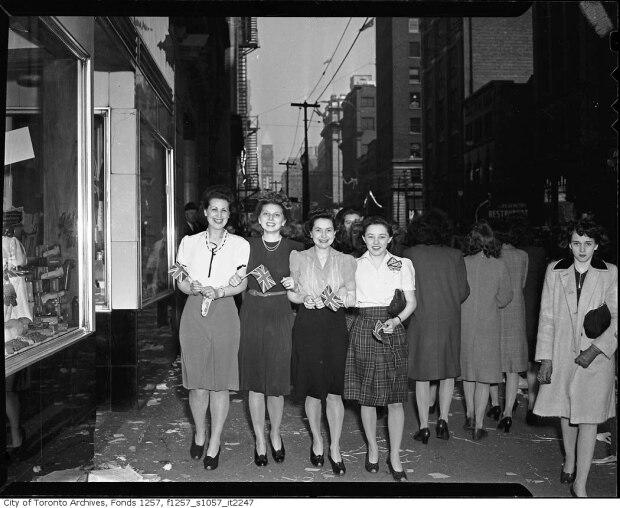
The Toronto that existed when war was declared in the summer of 1914 was much smaller than today's bustling metropolis. City stats from 2018 put Toronto's population at just over 2.9 million. But at the start of the war, the city's population topped out at around 470,000 people.
That number started to rise as people started coming to Toronto for work.
"So many war workers streamed into Toronto that there was an acute housing shortage," Reeves said.
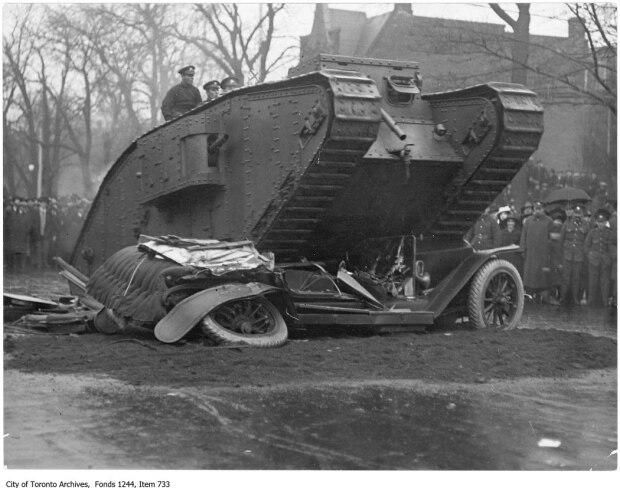
Outside the central downtown business areas, the city was a very low-rise environment. Row houses dominated, with only a smattering of apartment buildings — a far cry from Toronto's current skyline.
Some areas around the city weren't yet developed at all. Scarborough, for instance, would have been all farm fields back then.

At the time, the area around old city hall was the most densely populated neighbourhood in all of Canada, Reeves said. It was decidedly working class, and an area referred to by some as a slum.
"There was a lot of pressure on trying to find housing," said University of Toronto history professor Steve Penfold. "You saw a big influx of people in both wars."
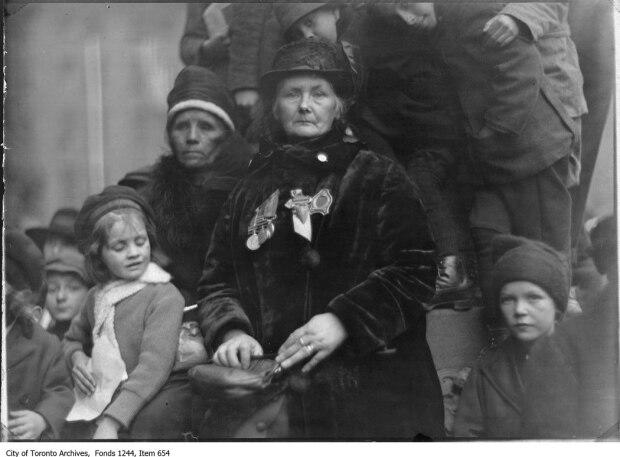
Industry boomed in the First World War, as workers had to provide material for the war effort. Women entered the workforce in record numbers, replacing men who were serving overseas.
Ships were built in Toronto pre-war, but the waterfront was completely transformed to make vessels for overseas service. Auto-makers became armoured car manufacturers.
Toronto also became a training hub, in areas like Exhibition Camp, High Park and Humber Valley. Later on, the University of Toronto became a training base for the fledgling Canadian Air Force.
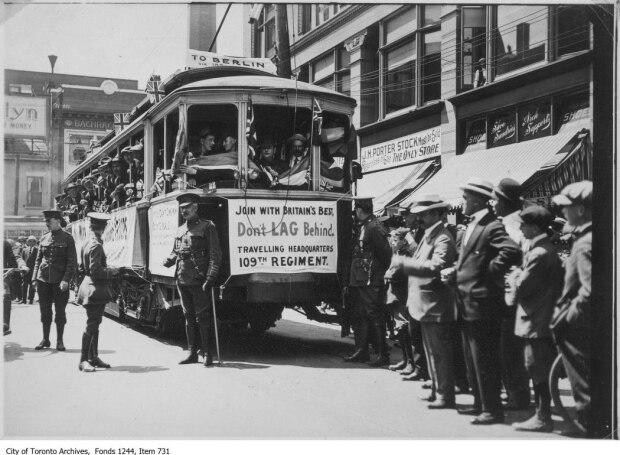
By the Second World War, Toronto's population had grown to 680,000. The city was in "much more dire economic straits" at the time, Reeves said, after enduring a full decade of economic trauma through the Great Depression.
Again, there was a huge surge in patriotism and a retooling of industries to support the war effort.
"The threat posed by Nazism and Hitler, people understood that as fundamentally different than the First World War," Reeves said.
"The patriotic response was almost redoubled given what was at stake."
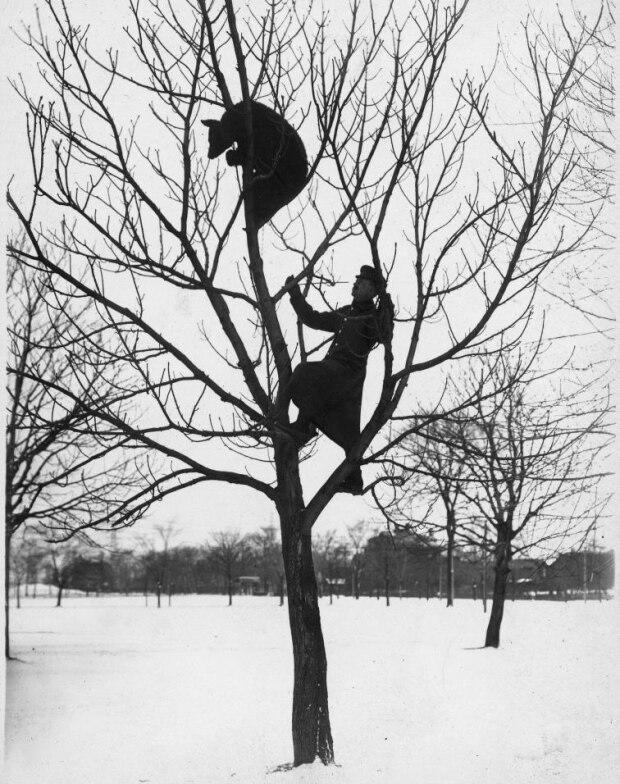
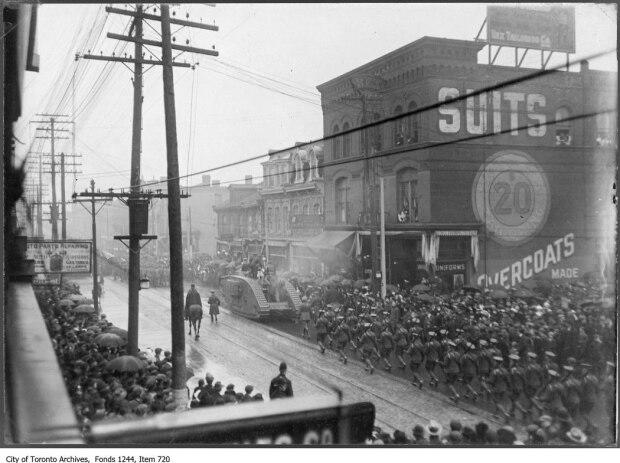
The look and feel of the city had significantly changed by this point. Though streetcars remained a primary mode of transportation, cars had become more common, and more multi-unit residential development was now happening.
Challenges abounded, too. In 1943, Toronto experienced an extreme coal shortage, according to the city. Canada's fuel controller requested that all Canadian homes not be hotter than just over 18 C to conserve fuel.
Metals, paper, rags, and even bones (to make glycerine for explosives), were collected to be recycled for the war effort.
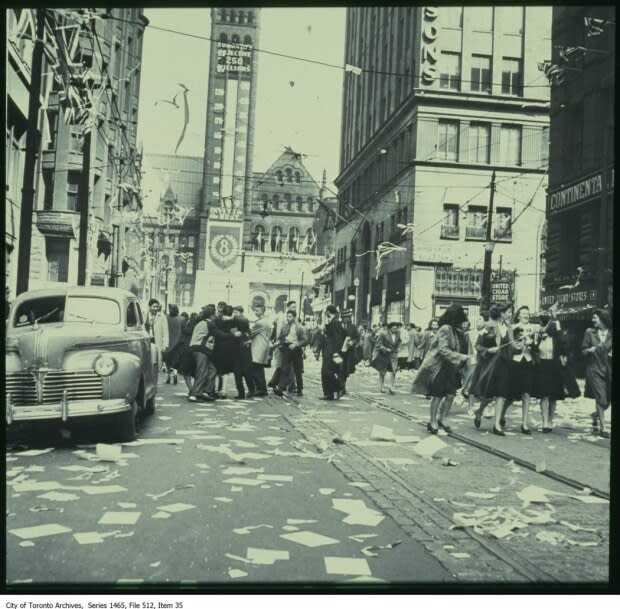
There were many differences between the two conflicts, but there was one constant, Reeves said.
"Many things changed — but when I see the faces of young people between the two wars, there are more similarities in the enthusiastic response to want to protect Canadian freedoms."



